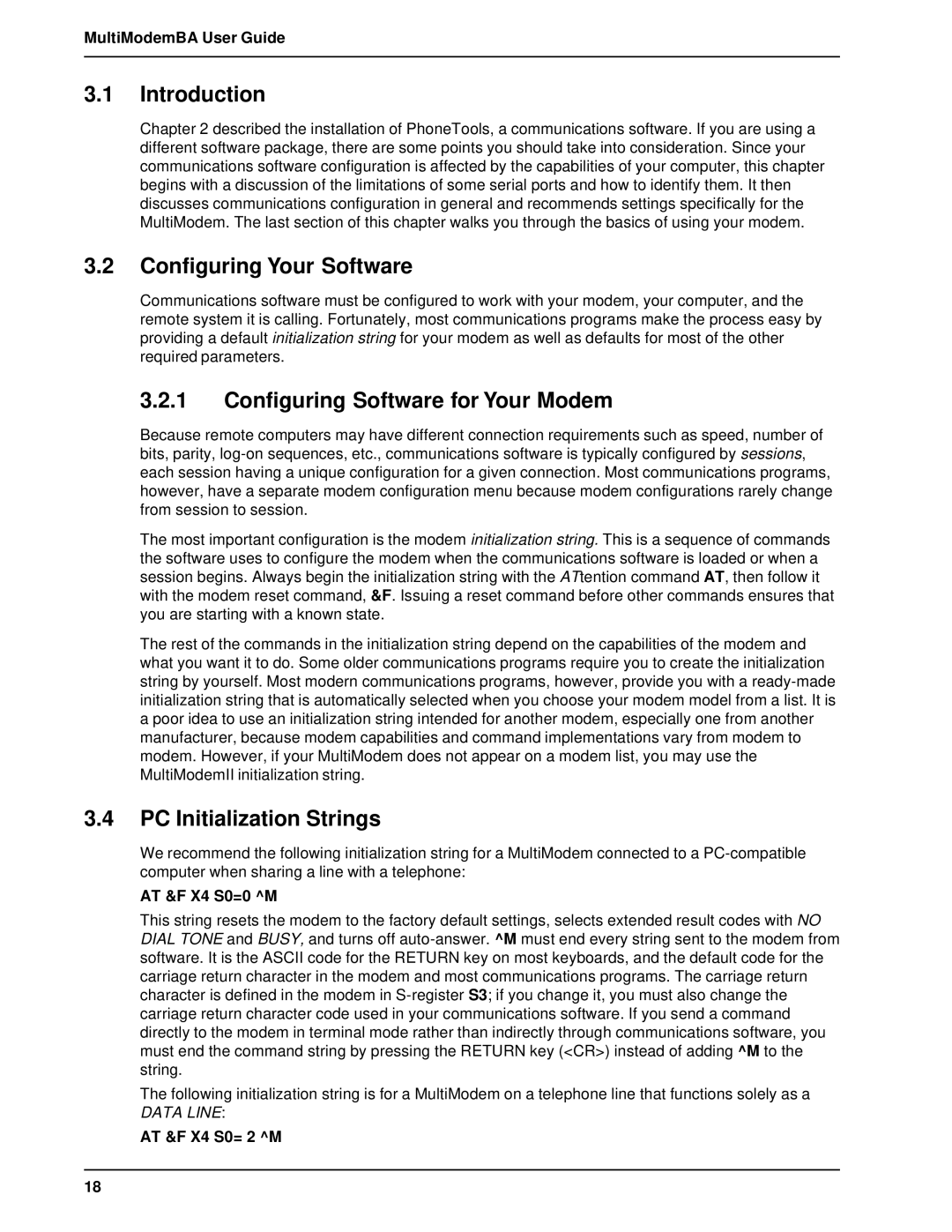
MultiModemBA User Guide
3.1Introduction
Chapter 2 described the installation of PhoneTools, a communications software. If you are using a different software package, there are some points you should take into consideration. Since your communications software configuration is affected by the capabilities of your computer, this chapter begins with a discussion of the limitations of some serial ports and how to identify them. It then discusses communications configuration in general and recommends settings specifically for the MultiModem. The last section of this chapter walks you through the basics of using your modem.
3.2Configuring Your Software
Communications software must be configured to work with your modem, your computer, and the remote system it is calling. Fortunately, most communications programs make the process easy by providing a default initialization string for your modem as well as defaults for most of the other required parameters.
3.2.1Configuring Software for Your Modem
Because remote computers may have different connection requirements such as speed, number of bits, parity,
The most important configuration is the modem initialization string. This is a sequence of commands the software uses to configure the modem when the communications software is loaded or when a session begins. Always begin the initialization string with the ATtention command AT, then follow it with the modem reset command, &F. Issuing a reset command before other commands ensures that you are starting with a known state.
The rest of the commands in the initialization string depend on the capabilities of the modem and what you want it to do. Some older communications programs require you to create the initialization string by yourself. Most modern communications programs, however, provide you with a
3.4PC Initialization Strings
We recommend the following initialization string for a MultiModem connected to a
AT &F X4 S0=0 ^M
This string resets the modem to the factory default settings, selects extended result codes with NO DIAL TONE and BUSY, and turns off
The following initialization string is for a MultiModem on a telephone line that functions solely as a
DATA LINE:
AT &F X4 S0= 2 ^M
18
